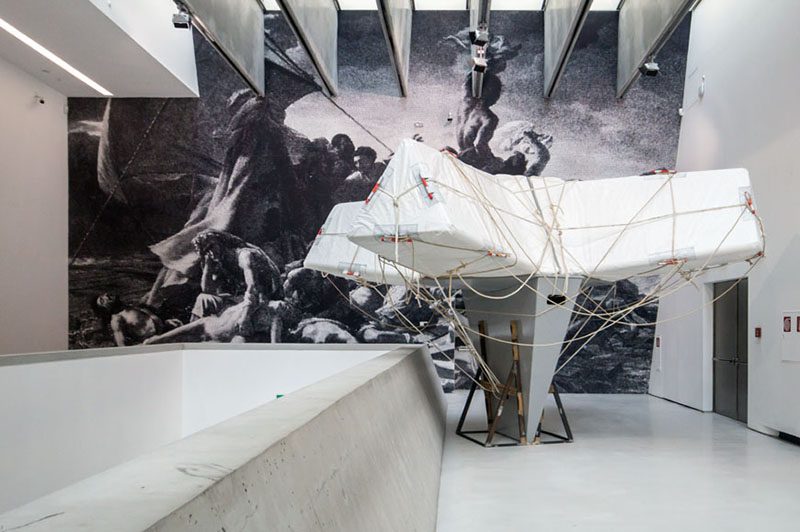ART CITIES:Rome-Transformers at MAXXI
 The art that transforms the world is at the center of an exhibition at the national museum for art of the 21st century in Rome, or MAXXI. The title of the exhibition “Transformers” is a reference to the Japanese toy robots able to transform into different figures, an ironic allusion to the main theme “Our world is in transformation, it is a combination of analogue and virtual reality that is redrawing our ways of living”.
The art that transforms the world is at the center of an exhibition at the national museum for art of the 21st century in Rome, or MAXXI. The title of the exhibition “Transformers” is a reference to the Japanese toy robots able to transform into different figures, an ironic allusion to the main theme “Our world is in transformation, it is a combination of analogue and virtual reality that is redrawing our ways of living”.
By Dimitris Lempesis
Photo: MAXXI Museum archive
The artistic director of the MAXXI and curator of the show, Hou Hanru, described an important trend in creative art, a “Global Phenomenon transforming daily life into the imaginary and vice versa”. The participating artists: Choi Jeong-hwa, Didier Fiuza Faustino, Martino Gamper and Pedro Reyes, are at once artists, designers and social activists. Through their works, reality is transformed into another reality, which sparks the imagination, stimulates reflection, encourages sharing, experience, and looking beyond. A moving flower with golden petals welcomes visitors in the MAXXI museum‘s courtyard. This giant flower, made with the emergency thermal blankets used every day during rescuing operations in the Mediterranean, is actually the installation “Golden Lotus” by Choi Jeong-Hwa. The artist assembles ordinary and trifling objects to create installations that transfigure the surrounding space, like “Hubble Bubble”, a forest made with hundreds of green plastic baskets, or “Life Life” which is installed in a gallery overlooking the MAXXI’s courtyard and invites the visitors to interact with 3000 balloons which explode, deform and deflate at their passage. “Post forma” is a collection of “Metamorphic” chairs by the South-Tirolean designer Martino Gamper, whose research between craft, design and art has always been focused on the process of production and transformation applied to everyday objects. The chair implies rest, sociability, dialogue, exchange, the public may use Gamper’s chairs to sit, thus activating such relationships. By assembling and re-configuring artifacts which had already lived a previous life, Gamper emphasizes the process of re-inventing things, as well as the empathetic relationship between objects and individuals. Although guns and rifles symbolize violence and aggressiveness, they can also become music and convey a message of peace. Thus Pedro Reyes, loves to explore spaces and defy conventions, transforms them to the mechanical orchestra “Disarm”. Following his personal research on fundamental social issues, Reyez presents an array of musical instruments made from firearms seized and dismantled by the Mexican Army, the project also comprehends a newspaper on which Reyes reports official data on weapon production and trafficking. Finally, Didier Fiuza Faustino explores the relationship between body and space. His site-specific installation “Lampedusa”, is a gigantic polyester boa to which to cling for survival, is located opposite a large reproduction of Géricault’s “Raft of the Medusa”. Equally strong and disconcerting are the works “Body in Transit”, a box to transport clandestine immigrants on airplane, and “Exploring Dead Buildings 2.0”, an installation the artist set up in Havana, located within the utopian building designed by Italian architect Vittorio Garatti in 1961–65 for a dance school that never opened.
Info: Curators: Hou Hanru & Anne Palopoli, MAXXI National Museum of XXI Century Arts, Via Guido Reni 4 A, Rome, Duration: 11/11/15-28/3/16, Days & Hours: Tue-Fri 11:00-19:00, Sat 11:00-22:00, Sun 11:00-19:00, www.fondazionemaxxi.it






